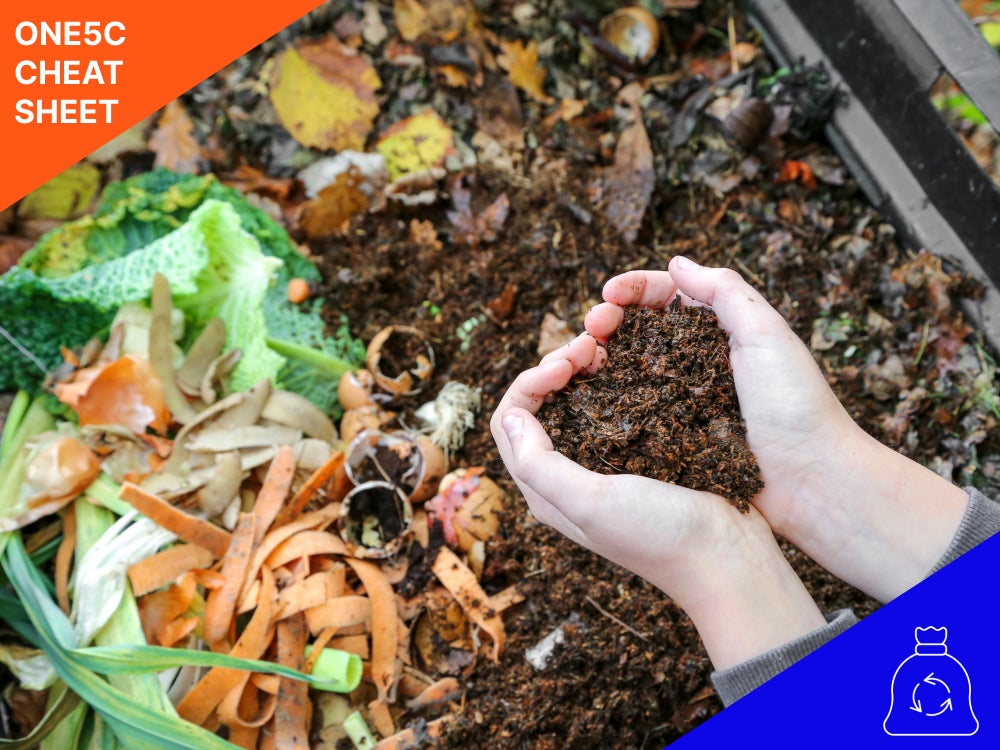Food gets lost or wasted at every step from farm to plate. On top of all the things we can do as individuals and societies to reduce the amount of perfectly good grub that ends up in landfills, there’s quite a lot that can be done with even the trickiest scraps.
Want more Earth-saving tips?
Subscribe to the one5c newsletter here
In fact, the same hierarchy we learned for dealing with plastic as kids (reduce, reuse, recycle) exists for food. Reducing the amount of unwanted edibles we produce, purchase, and cook is the most important first step. Then, we can reuse whatever scraps and leftovers we can in smoothies and stocks, and donate whenever possible.
Outside our homes, though, food waste recycling can mean many things. But they all have this in common: food recycling turns old food into something new.
Recycling food waste as compost, biogas, and animal feed
Of all the ways to recycle food waste, compost piles are probably the most familiar. Composting food waste unleashes microbiota and harnesses the natural process of decomposition to turn yesterday’s apple cores and potato peels into a nutritious “black gold” that can help grow more food or give your houseplants an extra boost.
Harnessing the power of natural decomposition—in a controlled way—can also generate biogas. This process funnels leftovers into machines called anaerobic digesters to create methane, or biogas. In 2019, anaerobic digesters processed more than 17 million tons of food waste, according to the EPA.1 The process keeps planet-warming methane out of the atmosphere and provides a more environmentally friendly alternative to natural gas, which the U.S. relies on for about one-third of its energy.2
Beyond biogas, turning food scraps into animal feed sounds like a given, but over the past several decades, disease outbreaks have spurred tighter regulations around the practice. This ancient technique of turning our leftovers into grub for livestock is an incredibly sustainable one—especially considering how much energy, water, and land goes into growing food that gets scarfed up by pigs, cows, and chickens across the country. Fortunately, innovations such as high-tech sensor processing are pushing this age-old trick back into the mainstream.
GO DEEPER ABOUT FOOD WASTE RECYCLING
Where does most food waste end up?
If food waste slips past all three R’s, it’s most likely bound for the landfill. Unfortunately, this is the fate of most food waste. The EPA estimates that 60% of food waste winds up in these trash heaps—amounting to about 24% of all the solid waste in U.S. landfills.3
The big problem with sending our scraps to landfills is emissions. If food, or other organic matter, breaks down in an anaerobic environment like a cramped dump, it creates methane—a super potent greenhouse gas. Municipal solid waste landfills are the third-largest source of methane emissions from human activities in the States.
GO DEEPER ABOUT FOOD WASTE IN LANDFILLS
- Anaerobic digestion facilities processing food waste in the United States (2019), U.S. Environmental Protection Agency, April 2023. ↩︎
- Monthly Energy Review, U.S. Energy Information Administration, September 2023. ↩︎
- Quantifying methane emissions from landfilled food waste, U.S. Environmental Protection Agency, October 2023. ↩︎

